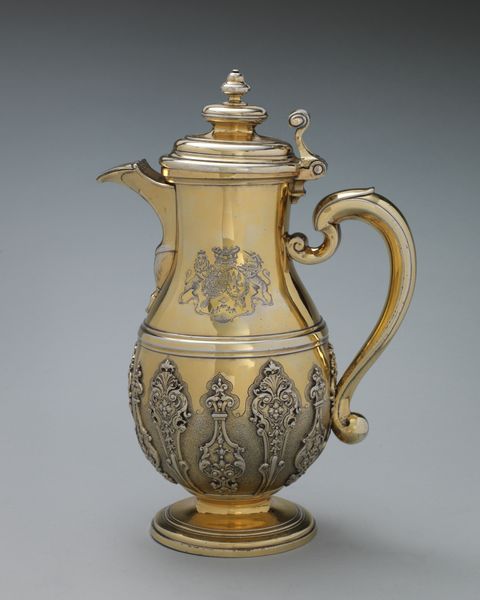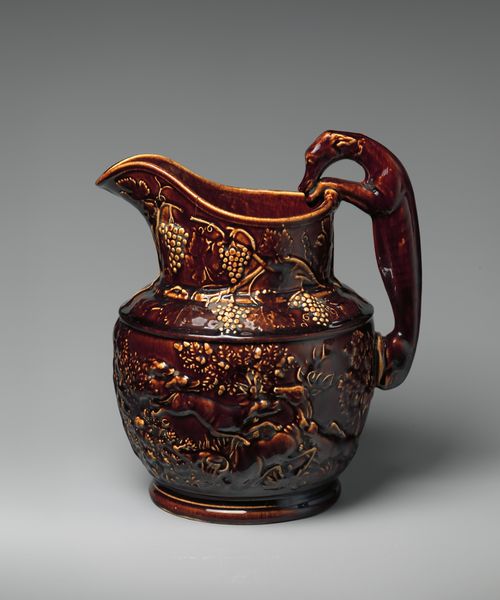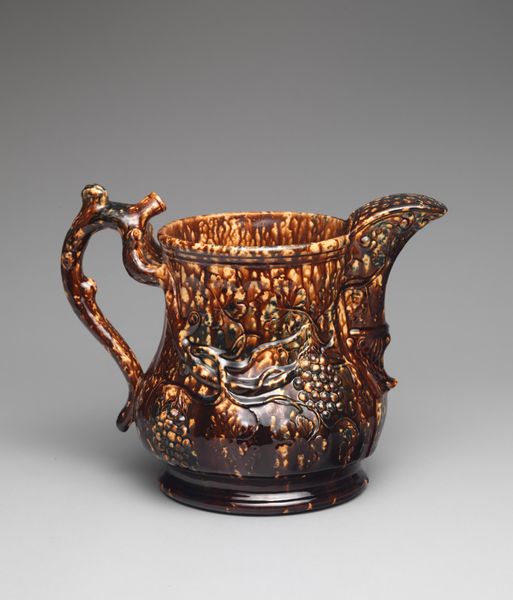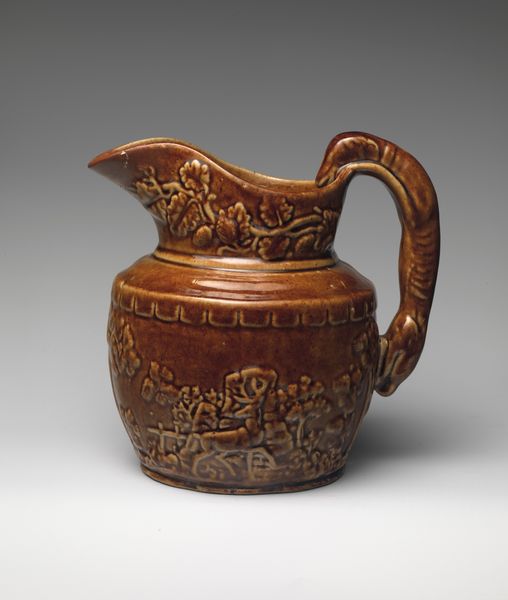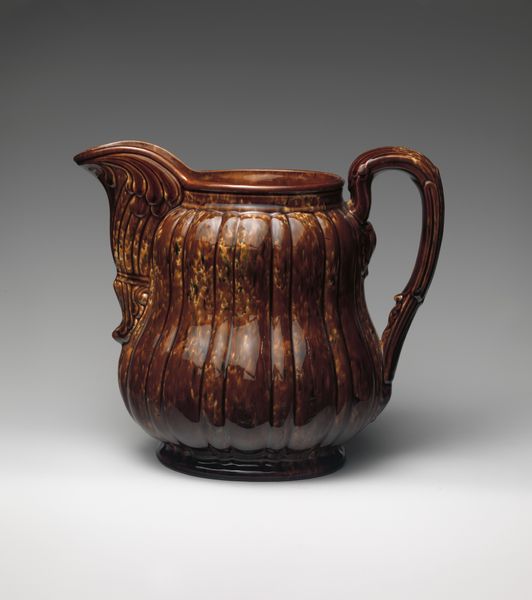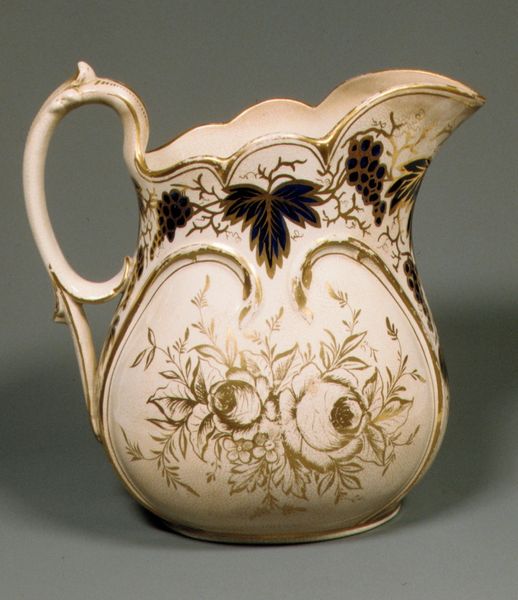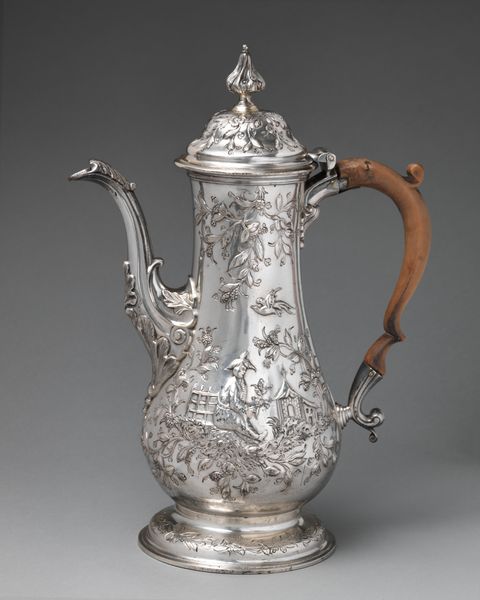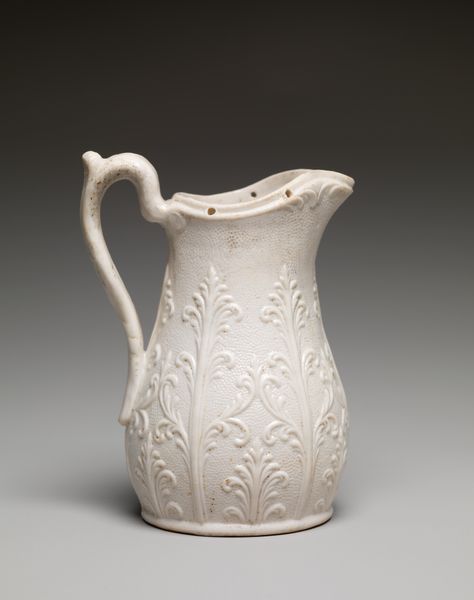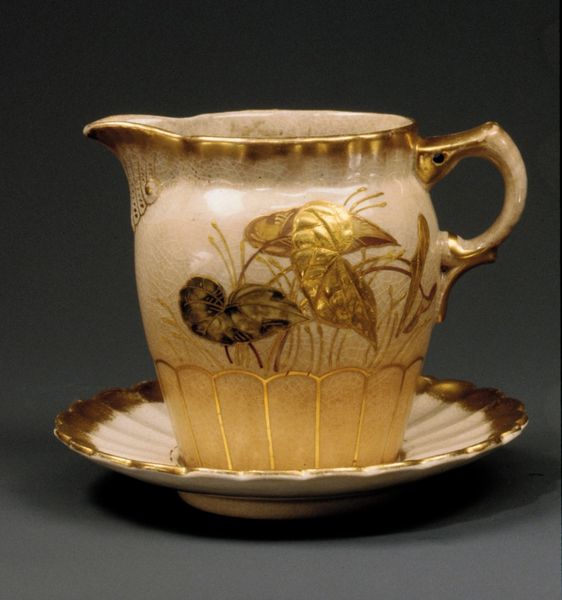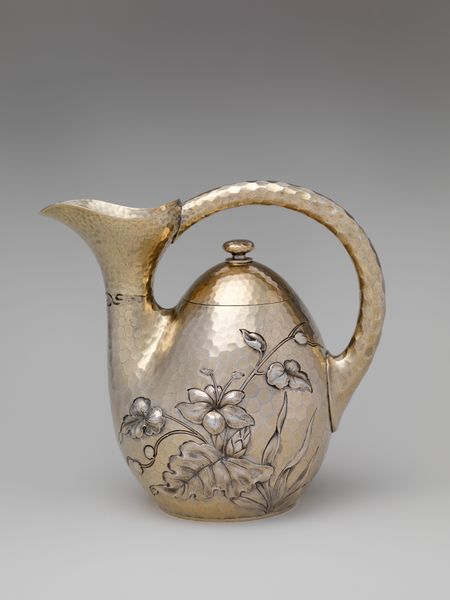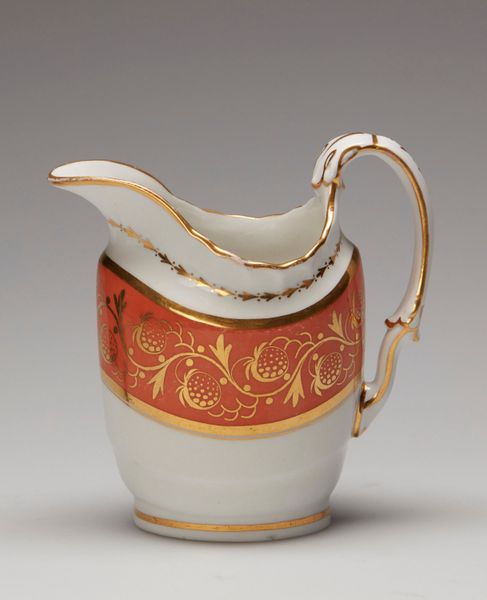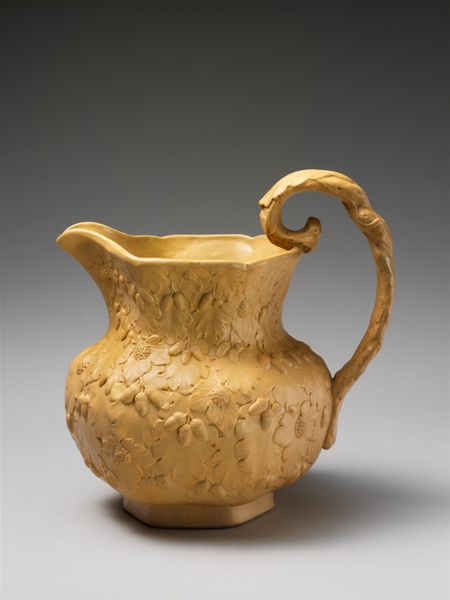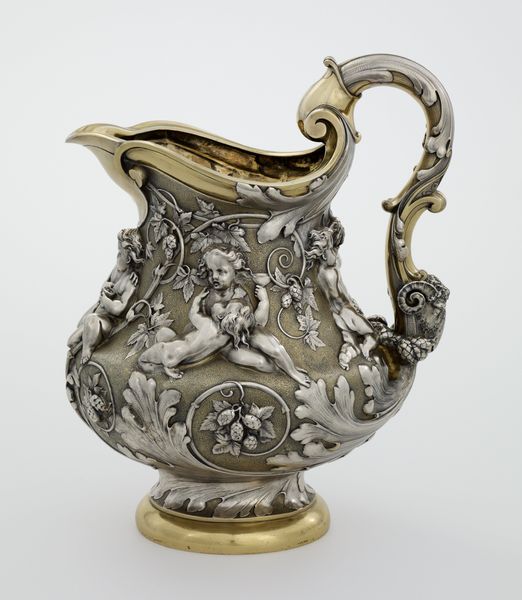
ceramic, earthenware, sculpture
#
ceramic
#
earthenware
#
stoneware
#
sculpture
#
romanticism
#
ceramic
Dimensions: 9 5/8 x 9 1/8 x 7 in. (24.4 x 23.2 x 17.8 cm)
Copyright: Public Domain
Editor: This is a stoneware pitcher, crafted by the American Pottery Manufacturing Company in 1833. I’m struck by how ornate it is, especially the raised thistle decorations. How does this level of detail fit into the context of ceramic production at the time? Curator: That's a great observation. Notice how the "high art" sensibility, represented by the sculpted thistles and decorative handle, is intrinsically linked to the processes and labor involved in mass production of earthenware during the 19th century. The decorative choices weren't simply aesthetic, they were strategic. How might this kind of ornament have affected the pitcher’s appeal to a burgeoning middle class? Editor: I guess the decoration adds value. It probably transformed a common household object into something aspirational? Were they trying to compete with more expensive materials? Curator: Exactly. It demonstrates the power of applied art. The materials, predominantly earthenware, speak to accessibility, but the molded decoration—suggesting luxury—challenges that notion. The process of applying relief designs using molds became a way to simulate higher-end materials like silver or porcelain at lower manufacturing costs. In turn, this expanded the reach of what was considered “art” into daily life. This process blurs traditional art boundaries and the social stratification of taste. Does this give you a different way of interpreting the work? Editor: Yes, it's more than just a pitcher; it's a product of its time, reflecting social aspirations and the evolving relationship between labor, materials, and design. I never considered how deeply the manufacturing process influenced the "artistic" elements. Curator: Indeed. Examining the materials and means of production reframes how we value and understand art, even something as simple as a pitcher.
Comments
No comments
Be the first to comment and join the conversation on the ultimate creative platform.

